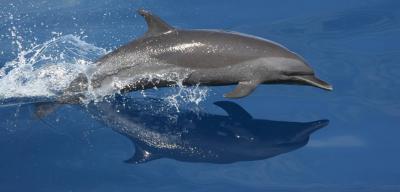
According to biologists from NOAA’s Fisheries Service, the populations of two species of dolphins in the eastern tropical Pacific Ocean are increasing after being severely depleted due to accidental death from tuna fishing between 1960 and 1990.
Between 1960 and 1990, the northeastern offshore spotted and eastern spinner dolphin populations dropped to 20 percent and 30 percent, respectively, of their pre-fishery levels when dolphins were caught and died in tuna purse-seine nets.
Since the early 1990s, however, the number of reported dolphin deaths has been very low thanks to imposed restrictions on the tuna fishery.
“These estimates are encouraging because they are consistent with what we would expect to see if these stocks are recovering, now that reported fishery mortality has been dramatically reduced,” said Dr. Lisa Ballance, director of NOAA’s Southwest Fisheries Science Center protected resources division.
The eastern spinner dolphin is distinguished by its triangular dorsal fin and uniform gray color. The northeastern offshore spotted dolphin has a falcate, or sickle-shaped dorsal fin and light spotting on the belly.
“We expected to see these populations begin their recovery years ago, because fishermen have been so successful at reducing dolphin deaths,” said Tim Gerrodette of NOAA’s Fisheries Service.
Today’s report stems from a series of research cruises conducted since 1986. It presents new estimates of abundance for 10 dolphin stocks for each survey year between 1986 and 2006.
Researchers will continue to monitor dolphin populations at sea through comprehensive ecosystem research cruises.
A summary of 2006 ETP dolphin abundance estimates may be found at, htswfsc.noaa.gov/




















are you sure they arent coming out of the center of the earth?
hheheh
yay fisherpeople!